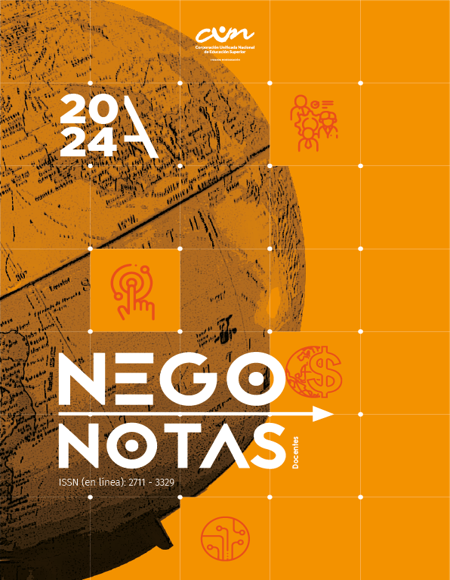ROE and EVA in the medium-sized Colombian edible oils and fats factory
ROE y EVA en la mediana fábrica colombiana de aceites y grasas comestibles
Main Article Content
Abstract
The purpose of this research is to evaluate the financial performance of the medium-sized edible oils and fats factory in Colombia in the period 2016-2021, using as methodology the static and trend analysis of the return on equity (ROE) and economic value added (EVA) indicators and their inducers such as growth, efficiency, efficiency and effectiveness. It is found that it achieves a ROE with a positive sign in each of the years. It also achieves a positive EVA every year. When compared to the sector, it was found that its ROE was higher because it was more efficient in the use of assets and more effective in controlling costs and expenses; in addition, its EVA per monetary unit invested was higher because its after-tax return on net operating assets was higher, which allowed it to overcome its higher cost of capital.
Downloads
Article Details
References (SEE)
Atrill, P. (2017). Financial management for decision makerK. Pearson Education.
Brealey, R., Myers, S., Allen, F. y Edmans, A. (2023). Principles of corporate finance (14ª ed.). New York: McGraw- Hill.
Brigham, E. y Ehrhardt, M. (2018). Finanzas corporativas. Enfoque central (1ª ed.). México: Cengage Learning.
Chen, S. y Dodd, J. (1997). Economic Value Added (EVATM): An empirical examination of a new corporate performance measure. Journal of Managerial Issues 9 (3), 318–333. http://www.jstor.org/stable/40604150.
Congreso de Colombia (agosto de 2004). Ley 905 de 2004. http://www.secretariasenado.gov.co/senado/basedoc/ley_0905_2004.html
Damodaran, A. (2022). Archived data-Discount rate estimation [Base de datos]. Damodaran Online. http://pages.stern.nyu.edu/~adamodar/
DANE (2020). Clasificación industrial internacional uniforme de todas las actividades económicas. Revisión 4 adaptada para Colombia. CIIU Rev. 4 A.C. https://www.dane.gov.co/files/sen/nomenclatura/ciiu/CIIU_Rev_4_AC2020.pdf
DANE (2022): Encuesta anual manufacturera. Anexos principales variables 2016-2021. https://www.dane.gov.co/index.php/estadisticas-por-tema/industria/encuesta-anual-manufacturera-enam/eam-historicos
DANE (2023). Producto Interno Bruto desde el enfoque de la producción a precios constantes I trimestre 2023. https://www.dane.gov.co/index.php/estadisticas-por-tema/cuentas-nacionales/cuentas-nacionales-trimestrales/pib-informacion-tecnica
Dobrowolski, Z., Drozdowski, G., Panait, M. y Babczuk, A. (2022). ¿Can the economic value added be used as the universal financial metric? Sustainability, 14, 2967. https://doi.org/10.3390/su14052967
Dumrauf, G. (2017). Finanzas corporativas: Un enfoque latinoamericano (3a ed.). Buenos Aires: Alfaomega Grupo Editor Argentino.
EMIS professional (2022). ISI Emerging Markets Group [Base de datos]. https://www-emis-com.bd.univalle.edu.co/php/dashboard?
García Peña, M., López Ocmin, L. S. y Romero-Carazas, R. (2023). Control interno de inventario y la gestión de resultados de un emporio comercial de la región de San Martín - Perú. Región Científica, 2(2), 202392. https://doi.org/10.58763/rc202392
Gonzales Centon, J. M., Chávez Cubas, W., Berrio Huillcacuri, J. y Santos Maldonado, A. B. (2023). El crecimiento empresarial y su relación en la rentabilidad de una MYPE del rubro comercial en Arequipa, Perú. Región Científica, 2(2), 202387. https://doi.org/10.58763/rc202387
Gupta, V.K. y Sikarwar, E. (2016). Value creation of EVA and traditional accounting measures: Indian evidence. International Journal of Productivity and Performance Management,65 (4), 436-459. https://doi.org/10.1108/IJPPM-01-2014-0008
Haro, D. y Monzón, R. (2020). Valor económico agregado como indicador en la gestión de negocios en las empresas. Yachana, revista científica, 9(2), 39-49. http://dx.doi.org/10.1108/eb060736
Manosalva Vargas, L. M., Yalta Cañote, L. P. y Pérez Mamani, R. H. (2023). Costos de ventas y rentabilidad de una industria molinera en Cajamarca – Perú. Región Científica, 2(1), 202316. https://doi.org/10.58763/rc202316
Martin, J. y Petty, J. (2001). La gestión Basada en el Valor. La respuesta de la empresa a la revolución del accionista. Barcelona: Ediciones Gestión 2.000 S. A.
Modigliani, F. y Miller, M. (1963). Corporate income taxes and the cost of capital: a correction. The American Economic Review, 53, 433-443. http://www.jstor.org/stable/1809167.
Obaidat, A. (2019). Is economic value added superior to earnings and cash flows in explaining market value added? an empirical study. International Journal of Business, Accounting and Finance, 13 (1), 57-69. https://www.thefreelibrary.com/IS%20ECONOMIC%20VALUE%20ADDED%20SUPERIOR%20TO%20EARNINGS%20AND%20CASH%20FLOWS%20IN...-a0584729660
Ochoa, G. y Cruz, L. (2021). Administración financiera. Correlacionada con las NIF. Mc Graw Hill, México.
Ortiz, H. (2018). Análisis financiero aplicado, bajo NIIF (16ª ed.). Bogotá: Universidad Externado de Colombia.
Prada Segura, J. A. (2023). Modelo de Deterioro de los Instrumentos Financieros. Región Científica, 2(1), 202317. https://doi.org/10.58763/rc202317
Rivera, J. (2011). Gestión basada en el valor. Cali, Colombia: Programa Editorial de la Universidad del Valle.
Rivera, J. (2017). Introducción a la administración financiera: fundamentos y aplicaciones para crear valor (2ª reimpresión). Cali: Universidad del Valle.
Rivera, J. y Alarcón, D. (2012). El cargo de capital en la evaluación del desempeño financiero de empresas innovadoras de confecciones de Cali. Estudios Gerenciales,38 (123), 85-100. DOI: https://doi.org/10.1016/s0123-5923(12)70206-1
Rivera, J., Román, A. y Reyes, P. (2023). Sistema dupont ampliado y EVA en análisis de la fábrica de grasas y aceites comestibles en Colombia. Transitare 9 (2), próximo a publicarse.
Ross, S., Westerfield, R., Jaffe, J. y Jordan, B. (2019). Corporate finance (12th. ed.). NY: McGraw-Hill Education.
Salaga, J., Bartosova, V. y Kicova, E. (2015). Economic value added as a measurement tool of financial performance. Procedia Economics and Finance, 26, 484-489. https://doi.org/10.1016/S2212-5671(15)00877-1
Scarfó, E., Merlo, M., Sandoval-Llanos, J., Vélez-Pareja, I., Castilla-Ávila, P. y Ortiz D. (2022). Análisis financiero integral: teoría y práctica. Alpha editorial.
Sectorial (2020). Colombia -Informe sector aceites y grasas – noviembre. https://www-emis-com.bd.univalle.edu.co/php/url-sharing/route?url=4e241aec0401397c&
Sectorial (2021). Colombia -Informe sector aceites vegetales- noviembre. https://www-emis-com.bd.univalle.edu.co/php/url-sharing/route?url=882768130401397c&
Sharma, A. y Kumar, S. (2012). EVA Versus Conventional Performance Measures – Empirical Evidence from India. Proceeding of ASBBS, 19 (1), 804-815.
Stern, J. M., y Willett, J. T. (Winter, 2014). A Look Back at the Beginnings of EVA and Value Based Management: An Interview with Joel M. Stern. Journal of Applied Corporate Finance, 26(1), 39-46. http://dx.doi.org/10.1111/jacf.12052
Stewart, B. (2000). En busca del valor. Barcelona: Ediciones Gestión 2000.
Superintendencia de Sociedades. (2022). Reportes masivos. Sistema Integrado de Información Societaria (SIIS). https://siis.ia.supersociedades.gov.co/
Superintendencia Financiera de Colombia (2022). Tasa de interés y desembolsos por modalidad de crédito. https://www.superfinanciera.gov.co/jsp/loader.jsf?lServicio=Publicaciones&lTipo=publicaciones&lFuncion=loadContenidoPublicacion&id=60955
Worthington, A. y West, T. (2001). Economic value-added: A review of the theoretical and empirical literature. Asian Review of Accounting, 9(1), 67-86.
Worthington, A. y West, T. (2004). Australian evidence concerning the information content of economic value-added. Australian Journal of Management, 29 (2), 201-224. https://doi.org/10.1177/031289620402900204
Zutter, C. y Smart, S. (2019). Principles of managerial finance brief (8th ed.). UK: Pearson Education.








